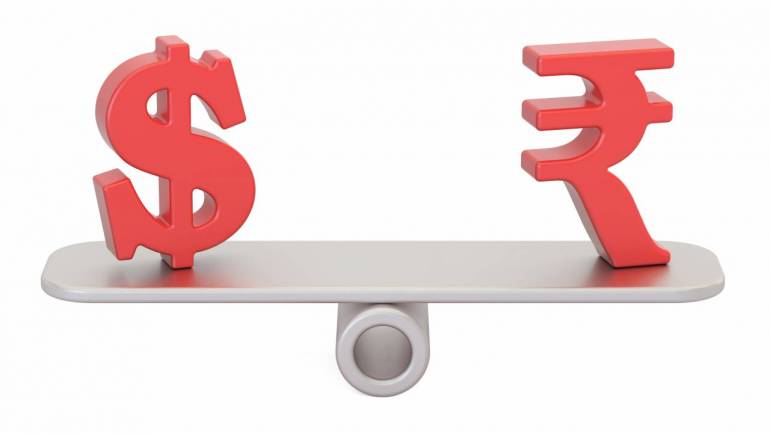The rupee ended at 70.01 against the dollar, as compared to close of 69.66 in previous close, marking the biggest single session fall since May 13. It touched a high of 69.37 against the greenback in intraday trade.
The Indian rupee fell against the US dollar on May 23 as stock markets witnessed correction from record highs on hopes that Narendra Modi-led government will return to power in the 17th Lok Sabha elections.
The rupee ended at 70.01 against the dollar, as compared to close of 69.66 in previous close, marking the biggest single session fall since May 13. It touched a high of 69.37 against the greenback in intraday trade.
"The focus will shift back to the country's macroeconomic indicators. While the positive sentiment in India will not allow meaningful correction in the immediate term, markets will have to watch out for global headwinds going forward. We have to see how the trade wars pan out and its impact on the rupee," said Ashish Vaidya, head trader at DBS Bank India.
Vaidya expects rupee to trade in the range of 69.25-72.50 against the dollar over the next three months.
The election results, which are likely to be in line with the exit polls, may lead to a massive win for the National Democratic Alliance, giving it a second shot at improving India's economic conditions.
"The rupee has benefited with the indications from today’s general election and we expect this to continue in the near-term. However, the extent of rupee optimism on the back of the election should be somewhat kept in perspective," said Pranjul Bhandari, chief economist, India, HSBC Securities and Capital Markets. "We would expect FX policy to smooth the rupee’s appreciation pressure and to absorb some forthcoming portfolio inflows," she said.
Bhandari expects rupee to end the year at 73 against the dollar, implying a 4.5 percent depreciation from its levels at the end of 2018.
"Key concerns are how the fiscal deficit will pan out. Against a backdrop of tepid, trade-war ridden global economic growth scenario, it remains to be seen how we will move out of the 7-8 percent range into a higher platform. The strong majority arising from the poll-verdict would pave way for the second round of reforms and the economy would, therefore, benefit immensely," said R K Gurumurthy, Head-treasury, Lakshmi Vilas Bank.
The country's stock markets touched record highs during the day, but ended lower on profit booking.
"New investment from the private sector has not picked up and the fiscal constraints limit government spending. With both demand and investment slowing down, the government might have to re-evaluate the implementation of its policy agenda and adjust its policy priorities to accelerate growth in the near term," said Arun Singh, Chief Economist, Dun & Bradstreet India. "Given that the current government is well versed with the areas of improvement, it will be advantageous compared to a new government which will frame its new set policy priorities from the start," he added.Get Lok Sabha 2019 Live Election Results, constituency-wise tally, news, views and analysis
Follow our Lok Sabha Election Result Live Blog here.



















